Creating a Portfolio: What you shoot vs How you shoot what you shoot. Three exercises to sharpen your attention to style.
One of the most difficult and challenging things we deal with as photographers is style. It is a defining point of our work. It is one of the things that will set our work apart from the other photographers out there. Style will be our calling card, the incredibly complex nature of our style will be the simplest thing people see. Our work.
And yet style cannot be taught, nor would you want it to be. It shouldn’t be contrived, forced, manipulated or fake. It has to be authentic. And that can be one of the biggest challenges a photographer can face.
Let’s get a few things out of the way first. You must be a shooter first. That means that the technical stuff isn’t getting in the way. You can light what you want, and can create a shot under duress and deliver an excellent result every time. Well, if not excellent then really really really good.
First we have to discover what it is you love. That may sound easy, but it can take a lot of personal introspection to find that inner driving point that makes it all come together. We will look at a few ways to get yourself directed toward the kind of work that you really love to do. And doing what you love is such a great way to make a living as a photographer.
Before we continue on with how to start creating a portfolio with style, I would like to mention the workshops and how well they are doing. Our next workshop in Chicago is full and we are booking for a very special workshop in Memphis. You may want to also check out some of the previous posts here on Lighting Essentials.
Preparing to Get Out There as a Pro
Adding Texture to a Photograph to Add Drama
Mixing Ambient and Strobes for Portraiture
Make Your Own Reality
The next workshop with openings will be in Memphis. It is going to rock. Two full days of photography, shooting, teaching, shooting, editing and more. Full immersion therapy for people who want to learn to light. Come on over to Learn to Light for more information.
What do you shoot? Are you a glamor photographer or an editorial portrait specialist? Do you like to shoot landscapes or still life or architecture? Or is fashion your focus? Let’s get started.
If you already know what you want to do, that’s great. Are you doing it? If not, what is getting in your way and preventing you from doing what you want to do? Take the time to note what you are doing to sabotage your images from getting made if you aren’t currently making them.
Is it time? Could you cut out some television, or weekend projects? Could you get one shot a weekend done while still spending time with family or obligations? Can you plan very tightly to keep yourself focused on a shot per weekend?
Is it money? Are there ways to do what you do without spending money? Portraiture or street shooting shouldn’t cost at all? Can you find people and partners who can work with you to get what you need without spending money? Are there ways to piggyback tripos out of town with a few hours or a day shooting?
Is it gear? Naw… that doesn’t fly with me. If you have a camera, you can make photographs. Now, sure… you may want to create rockstar shots with 12eleventy lights and trestles and gaffers and grips. Well… that ain’t gonna happen. But if you have a camera, you can use available light, bounce cards and great ideas to get to done on the making pics thing.
I am going to add some images of mine so you can see how a certain style can carry through subject matter and time frames.
Are you lacking ideas? Well, this is a tough one. If you are unable to find ideas to make photographs, then you may find this a difficult business to work through. However, if you need to prime the pump so to speak – and we all have to do that at some point – hit the bookstore, grab a coffee and start looking at magazines. Look at magazines where the interest focus is NOT what you are interested in. You want stimulation? Try magazines that you have not much interest in… then when the image captures you… BAM! That is a great idea… right?
This list will be your first challenge. Inertia. Getting moving. The first step. Work on it. Share with us how you moved through the challenges you had.
Now we have to separate a few things out. And this is where it gets really important for the individual photographer. Your subject is not your style.
I’ll say it again. Your subject is not your style. Your subject is your subject. It is what you shoot. It is your choice to aim the camera in the direction of what you like to photograph is a personal choice. A choice of subject.
How you shoot it is your style. What the image looks like is your style. How it engages the viewer and creates an emotion or reaction… that is attributable to your style. You could be a classic fashion shooter or a classic architectural shooter or a classic portraitist. Classic means you have a style that you apply to what you do. If you are wild and crazy, and that look carries across the subject matter, then you have a strong style. You will be hired for How you Shoot What You Shoot, not just What you shoot.
Let’s look at a few ways to decipher your work, and some methods to get started. When you are starting out it is hard to see things with a perspective. Maybe we can jump-start this process.
Exercise One:
Get 10 magazines – ones you don’t want to keep anymore. Or head to the doctor’s offices. Ask for some months old magazines. These should be within the genre of subject matter that you like to shoot. Not random magazines rather the ones that have the subject matter you like to shoot.
Glamor:
FHM, Maxim, Playboy, Esquire, and more like that.
Architecture:
Metropolitan Home, Architectural Digest, Home and Garden, Sunset and more.
Portraiture:
Bazaar, Vanity Fair, Forbes, Wired, Esquire, Men’s Health, ESPN
Fashion:
W, Vogue, Bazaar, Nylon, Details, Wallpaper, Z
Now that you have your magazines, go through them at a rather steady pace. Don’t stop and stare, just go through them with a steady turning of pages. All of them. One right after the other. Spend no more than one second per page. Do it with no interruption.
Now take a moment. Do you remember some images? Did some of them simply stand out to you? Good. There had to be a dozen or more that really caught your attention – even though your attention was not to be had at the moment.
Think about how powerful those images are. You looked at literally thousands of images in a very short time… and yet some of them stuck out and were remembered.
Shuffle the magazines and start again, but this time at your leisure. Tear the pages out. A boxcutter or Xacto knife works better if you want a clean edge. Simply tear them out and without editing the choices. Make no judgements if you can. If you like it, it gets cut.
Put the pages in a folder and let them sit for a week. We want fresh eyes when we go back to the next part of the exercise.
A week or so later. Go through the images in the folder and pull the ones you like better than the other ones out. Go quickly, we are looking for a rough edit. You should have about half or so in the new stack. If you have more than that, do it again with the new stack.
Now that you have that new stack, you have to edit it down to 20 images. Twenty. Your favorite 20 images from that big stack. Don’t analyze the shots at this stage, just pick the images you love. Be ruthless. And if you end up with only 18 shots, grab another couple of magazines and repeat the process above. We need to get to 20 images that you would be proud of having shot.
Lay them all out on the floor and step back. With a notepad write down what they have in common. Are they one light shots in the studio? Or wild and free looking shots in urban locations. What about depth of field? Deep or shallow? Lens choice – are they predominantly long lenses or wide angles? Do they have a natural light feel or are they multiple lights with lots of modifiers? Big lights or small speedlight type of work. Are the shots tightly composed or more loosely presented. These are decisions you have to make as to how you would have done the shot, not necessarily that the shot was done that way.
These questions will start to lead you to the traits that make up the style of the work you like. Now before you start thinking this is ‘copying’ someone else’s work, it isn’t. It is inspiration, food for thought, a point of departure… it is a place to help you start to see what you like in the work you want to do. These images will represent a style of shooting the subjects you want to shoot. It may be a great lead for you to start to think about while you are creating your shots. It is your little, tightly edited set of images for inspiration.
Excercise Two: Noticing Style.
Here are some shooters who I believe have real “Style” with their work. You can see it in the way they approach a multiplicity of subject matter.
Sean Kernan
Fred Kenner
Patrick Demarchelier
Arthur Elgort
Tim Tadder
Dave Hill
Nick Onken
Chase Jarvis
Jake Chessum
Kate Orne
Lydon Wade
Zachary Scott
Sasha Waldman
Bob Stevens
Jeremy Cowart
Raymond Meir
Andrew Hetherington
Steven Klein
Chris Buck
Dan Winters
Now this is a short list for sure. There are more and I know I have missed some of my favorites. Yours too. But this gets the work going on determining what elements work for their style.
Get that notebook again and lets look at some things we need to evaluate in order to see what tools and surface elements are being used to create the style. (Whoa… don’t get ahead of it now. I know some of you already know that using specific tools and such is NOT style… but it is some quantifiable. The eye is the eye… timing, gesture, moments the ability to conceptualize. That stuff we aren’t getting into at this point. That, my friends, is up to you.) This exercise is NOT to get you to copy anyone. The styles above are all over the place. so there is no one way shown.
But each have a great sense of style to their work. So what we want to do is look at how others create style, and think about those things when we are shooting OUR work. Not copying the styles, but modeling the approach to A style. Get it?
Lighting:
- Natural
- Appears natural
- Dark and Moody
- Single Light
- Multiple Lights
- Location Heavy
- Studio Heavy
Add any additional criteria you want to add.
Note all things that are the similar in the work.
Composition:
- Classical
- Funky
- Off Kilter
- In Close
- Far Away
- Horizontal Prominent
- Vertical Prominent
- High Angle
- Low Angle
Add any additional criteria you want to add.
Note all things that are the similar in the work.
Post:
- Heavy Post
- Medium Post
- Minimal Post
- No Post.
Add any additional criteria you want to add.
Note all things that are the similar in the work.
At this point it is important to note that we are not caring about subject matter. We are looking at ways photographers create a style. It may not be a style that you are interested in or it may be such a blast that it makes you want to shoot like that. Cool. You can’t copy, you can only work through it as an inspiring model.
Imitate. Assimilate. Innovate.
– Clark Terry, jazz trumpet player extraordinaire.
More on this later in the posts.
And that is so true. Taking the time to do this with a couple of the names above is a great way to see how photographers work within parameters they set themselves. Don’t do all of them, but do a couple for sure. I suggest that you use one or two of the photographers you love. And do one or two of those shooters who may not be your cup of tea. It is a great exercise. Sharpens the mind.
Working with the above exercises will get your brain pumped.
Exercise Three: Your Work.
Now pull out your images. 4×6 prints made at Walmart or Costco would be fine. I don’t do this on a computer – I would rather do them where I can get a lot of them in my view. Spread ’em out on the table. Stand over and look for patterns and shapes and nuances and color and positioning… look for your style… even if it is only emerging. Create groups of images according the ‘style’ that you see represented there.
Next, put all of your favorite images in a set on one side of the table and then repeat exercise two (above) with your work. What makes them your favorites? How would you add to them? How will you think about your work as you continue on with your portfolio work. Make the notes and work them in your portfolio.
Creating images with style, your style, can help people get a handle on your vision, your way of working and your own ‘look’. This personal style will also be a great way of showing prospective clients that you deliver work that they know will be of the highest quality.
Here is a post from Robert Wright. This paragraph is right on the money.
“So apart from the efficiency aspect of being able to deliver 200 (? I have no idea the size of this cattle call) culled photographers to 50 editors for example-because, we really are doing them a favour-the magazines, getting their editors all on site on two days for a blitzkreig portfolio review-they are going to come away with something don’t forget-I just don’t get it. Yes, it is highly efficient to be able to see 14 editors in two days, literally, something that would take weeks or months to do conventionally-now. But do you really have a portfolio that is suitable for Business Week, ESPN, Field and Stream, Popular Mechanics, NYTimes Style, Lucky, Prevention and Redbook? Does it make any sense? So right there, out of 32 publications represented, just how many are you really suited for? And if you respond, ‘all of them’, then I think your portfolio needs some cutting…”
I really think you need to read this post by Wright in its entirety. All of it.
See you next time.

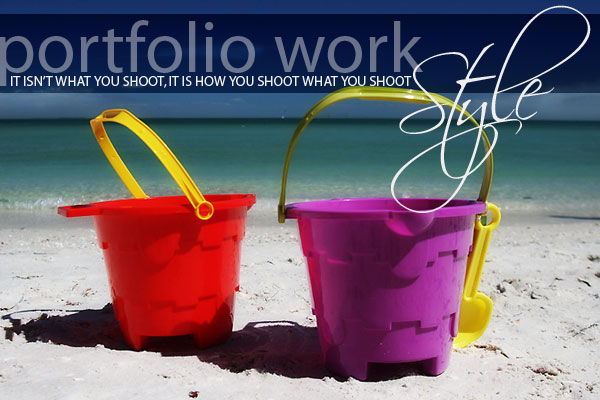

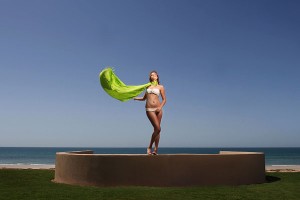
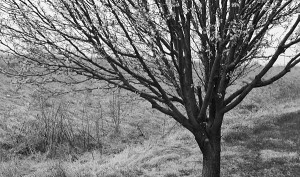
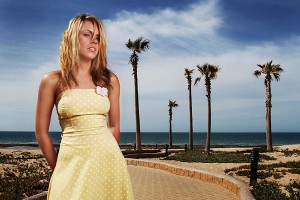
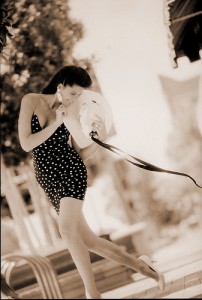
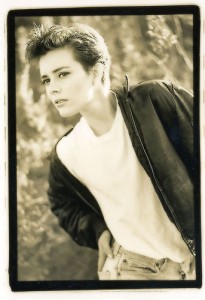
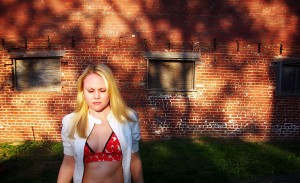




Fanastic post! Looking at unrelated magazines for inspiration is a great tip. I\’ve wondered what my style is for a while. Part of my problem in identifying it is that it has been evolving quickly since the beginning of this year. More importantly, I wasn\’t sure what characteristics I should look for in defining it. These exercises will go a long way in helping me uncover my style and your short list of things to look for when defining style is very helpful. I\’m anxious to read the next post in this series!
Wow this is one inspiring post wizwow! I really like the magazine idea and I’m really going to try this out because I’ve been searching for what I love to shoot and trying to define what exactly I want to do with photography. Thanks for putting this up for everyone to see!
Today I bought a stack of magazines from a used book store. Getting ready to start the project of finding my style. This article is extremely timely for me! Thank you!
Karla… that i so cool.
Care to share your progress with us?
Let me know… I am happy to help.
–don
Thank you, Don.
Well, I’ve completed the first part of the assignment. I have a sore wrist from all the page turning and tearing. I have to say, I’ve ended up with quite a stack. More than I thought I would. It might relect on my desperate need for direction, as I find that I like so many types of images. So, in about seven days, I’ll haul them all out and see what I see.
Thank you for your offer of help. You can be sure that I will be taking you up on it.
Karla
This was an awesome post and I can’t wait to get started! All the photo posts talk about getting your “own style” but nobody ever explained how to do it in a way that made sense. I’ll be working on it this week.
Thanks!
You sir, are brilliant. 😉 This series is fantastic.
A few years back a photography professor of mine suggested the same thing “cutting out magazine photosâ€; as my style continues to evolve I have found this extremely helpful. I might add it’s also a great time to study lighting techniques; Take those freshly torn images then try to figure out the type and direction of lighting used.
I’m in the process of doing my first “conceptual” shoot. A bunch of my friends want portraits, and I need to broaden my portfolio, but coming from a journalism background, creating a shot isn’t my forte. So I asked my friend to come up with an idea, whether it is an idea or a word. They all did, and I took that idea and built a concept based on what they gave me.
Granted, as a professional it’s probably not a good idea to let the client give you your idea, but for a beginner looking to practice stirring their brain, it could help.
Although coming up with 10 unique concepts did prove to be tiring, with all the research and imagining 🙂